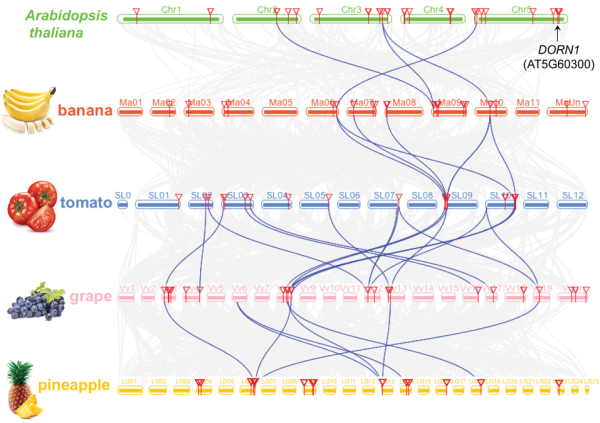

Given adenine 5’-triphosphate (ATP) is the universal energy source in all living cells, previous research proposed that extracellular ATP (eATP) play a critical role in plant growth, development and stress response. However, little is known in the action mechanism of exogenous ATP and its receptor DORN1 to mediate the physiological activities of harvested horticultural crops. Intriguingly, a recent study found that DORN1 binding to eATP mediate the banana fruit ripening and response to low temperature.
The key signaling role of eATP has recently been confirmed by the identification of the first plant membrane-associated eATP receptor, i.e. DORN1 in Arabidopsis, which becomes an important clue to better understand eATP signal transduction. Furthermore, considerable evidence indicated that exogenous ATP treatment at a suitable concentration is beneficial to maintaining energy status and, thus, can effectively attenuate stress symptoms and delay senescence of some postharvest horticultural crops, such as litchi, longan, carnation and mung bean sprouts.
“As the second largest fruit in the world and a typical climacteric fruit subjected to various abiotic and biotic stresses, banana fruit is ideal for investigating the physiological roles of DORN1 in these phenomena.” said Dr. SHAN Youxia from South China Botanical Garden of Chinese Academy of Sciences. “Thus, to explore the potential mechanism of these phenomena, we conducted a detailed genomic exploration of DORN1 genes in banana and explored the possible roles of DORN1s in banana fruit ripening and response to low temperature.”
This study identified a total of 34 DORN1 genes from banana genome, and synteny analysis suggests that DORN1 genes had conserved functions in both climacteric fruit and non-climacteric fruit (Figure).
Besides, the cis-element and microRNA targeting analyses indicated that MaDORN1s might regulate ripening process and low-temperature response of banana fruit.

Figure. Synteny analyses of DORN1 genes from banana and four other plant genomes. Gray lines in the background indicate the collinear blocks within banana and other plant genomes, while the blue lines highlight the syntenic DORN1 gene pairs
“As banana is a cold-sensitive tropical fruit, the quality formation depends largely on postharvest ripening.” said Dr. SHAN. “The unexpected finding was that pretreatment with 1 mM ATP for 5 min effectively accelerated banana fruit ripening by inducing rapidly the expressions of all the ten MaDORN1s at the early storage stage, while this pretreatment alleviated the development of chilling injury symptoms by inhibiting the expressions of almost MaDORN1 genes”.
Ultimately, the researchers indicate that combining the results of cis-element and miRNA targeting analyses with the differential expression patterns of MaDORN1s upon ATP treatment, it’s worth exploring how MaDORN1s participate in ripening process and cold tolerance of postharvest banana fruit in collaboration with interactive Transcription Factors or by identifying downstream-related target genes.
Overall, this study expands our knowledge involved in eATP and its receptor DORN1 in fruit ripening and cold tolerance. The researchers also indicate that the regulation of MaDORN1s involved in a complex regulatory network for fruit ripening and low temperature response is needed to be investigated further.
For further reading, please refer to: https://doi.org/10.1016/j.postharvbio.2020.111236.

